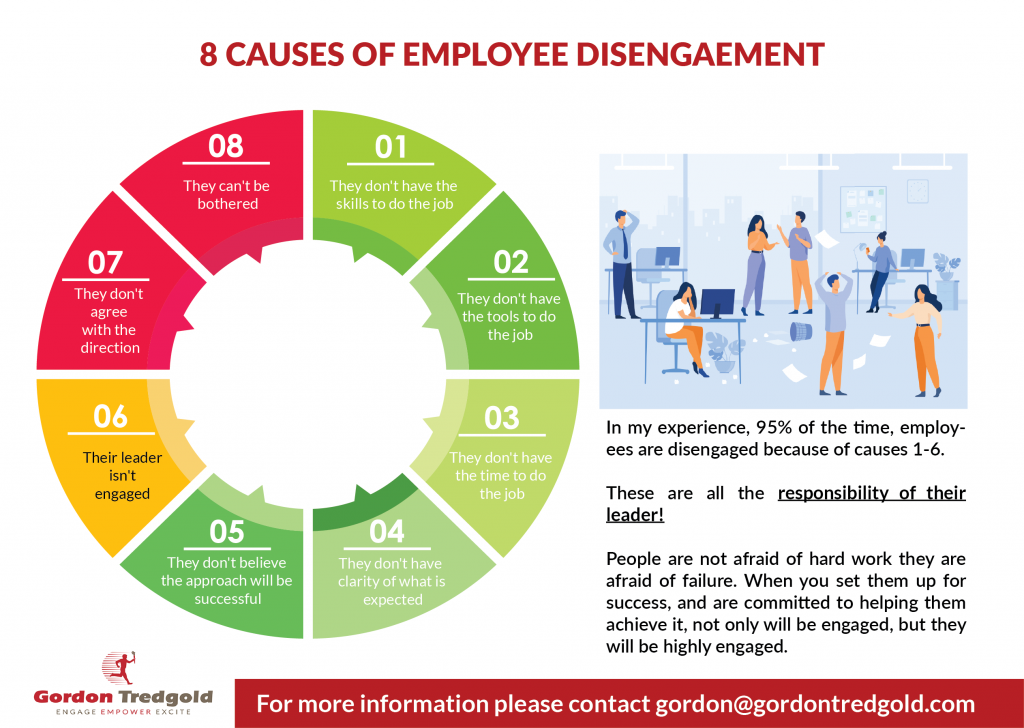
During my leadership trainings I always ask the question who is accountable for employee engagement?
Is it the Leader, the Employee, or both of them.
Everytime I do this more than 50% of the people respond that both the leader and employee are jointly accountable for employee engagement.
I strongly disagree with this for a number of reasons.
Firstly, as the leader is accountable for the results, and given that employee engagement is critical to getting results that seems a pretty clear reasons for why I see leaders as accountable being accountable for ensuring that employees are not only engaged, but highly engaged.
But, if you look beyond that, and study the reasons why employees become disengaged it I believe it becomes even more obvious.
In the chart below, I have listed the 8 most common reasons that I see for why employees become disengaged.
 .
.
Now yes, two of these, they can’t be bothered or they don’t agree with the direction are down to the employee. But I find that this is only true in less that 5% of the cases where I see disengaged teams.
Often if they don’t agree, this can be remedied by explaining why we are taking this direction. Explaining what are the benefits for the company, and also the the employee, of the direction that has been chosen. Knowing this can often help to get them on board.
But in the majority of cases for employee disengagement I find that it is because of one of these item
For the first six of these it’s the leaders job to ensure that their teams have everything they need. If you don’t then you have set them up for failure. And who would want to engage with something that they know will fail? I know I wouldn’t. People are not afraid of hard work they are afraid of failure. And if you set people up for success the vat majority of people will grasp it with both hands.
I am always staggered that companies pay fortunes to run employee engagement surveys, when asking these simple questions will let you know immediately if there is anything blocking them from being engaged.
One reason why these questions might not get asked, is if the leader themselves are not engaged. Leadership engagement runs at levels below employee engagement according to Gartner surveys, with management disengagement at around 70%, compared to employee disengagement which is at around 65-68%.
If the leaders are not engaged, then it’s highly unlikely that employees are engaged.
Given that employee engagement is critical to success it has to be a leaders #1 focus.
Step 1 – Be engaged, its hard to light a fire with a damp match
Step 2 – Ask your teams if they have everything they need to be successful.
This is a an excellent question. Not only does is check to see if they have everything they need, but if they say yes, then they have accepted accountability.
Step 3 – If they don’t have everything that they need, then get it for them. This is your job!
Step 4 to keep them engaged give them positive feedback and encouragement. Everyone loved praise and encouragement.
If you follow these 4 simple steps not only will you have engaged teams, but you will be well on your way to having highly engaged teams that deliver great results.
If you want to learn more about creating highly engaged teams or being a better leader click the link to make an appointment to talk about how I can help.
